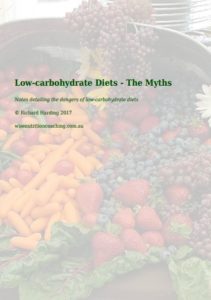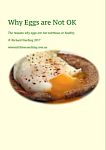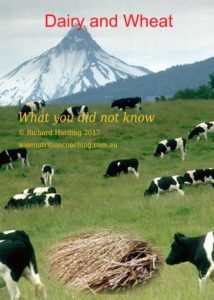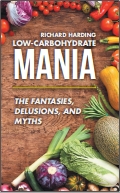When Vegan Diets Do Not Work
It is not uncommon for people to claim that they have tried a vegan diet and it simply did not work for them. Not all vegan diets are healthy.
Much publicity is given to the longevity of the people of Japan and Okinawa (an archipelago that stretches from southern Japan to Taiwan). However, the population with the longest lifespan and the highest levels of health on the planet is the vegan Californian Seventh-day Adventists.
People are not predisposed to vegan diets or otherwise. When it comes to nutrition, we are pretty much the same – allergies being one significant difference.
Below are components of a healthy whole-food, plant-based diet. Many people on a unhealthy vegan diet are missing a number of important components of an optimal diet.
Components of an Optimal Vegan Diet
Greens
Leafy green vegetables are low-energy foods that are high in nutrients. Leafy greens are the most nutrient-dense of all foods but usually only consumed as part of a burger.
Green vegetables are rich in folate (from Latin folium meaning leaf) and carotenoids which are powerful antioxidants. There are over 1,000 carotenoids which are only produced by plants. They usually range in colour from yellow, orange to red. Leafy greens also contain a moderate amount of alpha-linolenic acid (ALA – an essential omega-3 fatty acid).
The cabbage family (brassicas) includes kale, cabbage, broccoli, cauliflower, bok choy, mustard and a host of other asian greens that are powerful anti-cancer foods. Brassicas also lead to significant changes in behavior for children with autism. 1
Sulforaphane is one ingredient responsible for the anti-cancer and autistic behavioral changes and is not found in any other group of foods.
When people ask where do you get your calcium, iron and protein from, the answer is the same place as cows, elephants, rhinoceros and brontosaurus.
Despite the Australian Eggs website claiming that eggs are a great source of lutein and zeaxanthin, one normal 50 g egg only contains 0.25 mg of lutein and zeaxanthin. One cup of cooked kale contains 24 times more.
Whole-grains
There are three potential problems with people eating wheat and gluten: celiac disease, wheat allergy and non-celiac gluten sensitivity (NCGS). These issues affect 5-6% of people. People suffering from NCGS frequently have multiple food issues including dairy, eggs, tomatoes and other nightshade foods (potatoes, capsicums, egg plants) and foods containing fructose.
Avoiding wheat and other whole-grains unnecessarily is detrimental. It frequently results in a diet low in fibre and low in the many beneficial phytonutrients found in whole-grains.
Gluten-free diets have a detrimental effect on intestinal bacteria. 2 3 4
Despite the claims of popular commentators, whole-grains are anti-inflammatory. 5 6 7 8
Fruits
According to the Global Burden of Disease Study 2010 9, the greatest dietary burden was the Lack of fruit which was ranked 5th overall. This was much higher than Poor sanitation (ranked 26) and Unimproved water (ranked 33).
Many popular commentators suggest that we limit fruit intake to two pieces of fruit a day due to the fructose content. Dr. Bruce Bistrian, a professor at Harvard Medical School states, “Fruits are not harmful and are even beneficial in almost any amount.” 10
After herbs and spices, berries (acai berries, barberries, blackberries, blueberries, cherries, cranberries, mulberries, raspberries and strawberries) have the highest levels of antioxidants of any group of food.
Beans
Beans include pulses (dried beans and peas, chickpeas and lentils) as well as fresh beans and peas, soya beans and peanuts. The United Nations declared 2016 as The Year of the Pulse due to its importance (and neglect) in providing a healthy diet.
In the U.S., Asians and Hispanics have a much higher life expectancy than white, black or native Americans. 11
- Minnesota – Asian: 83 years; Hispanic: 87 years; White: 81 years
- Connecticut – Asian: 89 years; Hispanic: 83 years; White: 81 years
- California – Asian; 86 years; Hispanic: 83 years; White: 79 years
This is due to their much higher intake of beans. Tofu is coagulated soya milk and tempeh is made by the fermentation of whole soya beans. They are lightly processed foods that contain a wide range of phytonutrients, fiber, folate, iron, magnesium, calcium and vitamin K as well as the essential omega-3 fatty acid, alpha-linolenic acid. They are associated with a reduced risk of cardiovascular disease, sex hormone related cancers (breast, ovarian, endometrial and prostate cancers) and type 2 diabetes.
Complex Carbohydrates
Many popular diets emphasis that all carbohydrates should be avoided – not only simple, refined sugars such as sucrose, fructose, glucose and lactose (milk sugar). The rationale is that, when digested, starches result in glucose and fructose and therefore must be detrimental.
Complex carbohydrates are formed from complex combination of glucose and fructose. In addition to starches, this group also includes dietary fiber – carbohydrates that cannot be digested by enzymes in humans. They nourish bacteria in our intestines that are are essential for our health.
Humans have six to eight times more amylase (an enzyme that initiates the breakdown of starches) than chimpanzees. Chimpanzees primarily eat fruit, leaves and insects – but not tubers, beans or grains that contain high levels of starches.
Seeds and Nuts
The Global Burden of Disease Study 2010 rank Diets low in nuts and seeds as the third greatest dietary burden (ranked 12th overall), ranked just behind Diets high in sodium (ranked 11th overall).
Seventh-day Adventist studies have shown that Californian Adventists who undertake high physical activity, consume a handful of nuts five days a week, are vegetarians of normal weight increased their life span by 1.5-2.5 years compared with other Californian Adventists – and these other Californian Adventists are much, much healthier than the average American. 12
Mushrooms
Whilst mushrooms are not an essential part of a diet, ergothioneine is. Ergothioneine is an essential amino acid that is found most abundantly in mushrooms. It is also found in kidney, liver, black and red beans and oat bran. Ergothioneine (and mushrooms) act as a powerful mitochondrial antioxidant which protects DNA from damage and are protective against a number of cancers.
Mushrooms should not be eaten raw.
No Added Fats
Vegan diets can be high in fat. “Healthy” fats such as coconut oil, olive oil and other oils are frequently added. All added oils are detrimental whether sprinkled on food as a dressing or added to dips or smoothies.
All high fat meals (that is, a normal western meal) damages the endothelial lining of the arteries – cells cannot produce nitric oxide.
A study from the 1990s 13 compared the effect of a single high-fat meal (Sausage and Egg McMuffin with 50 g fat) with a low-fat meal (0 g fat) on the arterial blood flow. The meal significantly reduced the blood flow and it takes 4-6 hours to recover – just in time for the next high-fat meal.
The same high-fat meal increases inflammation markers. 14
A single high-fat meal increases cardiovascular reactivity to psychological stress. 15
Herbs and Spices
Herbs and spices are powerful antioxidants.
There are many studies showing that curcumin (the active ingredient of turmeric) is protective against myeloma, colon and pancreatic cancers, arthritis and inflammatory diseases. Turmeric is much more effective than the isolated “active” component. Supplements containing curcumin contain either black pepper or frankincense (Boswellia sacra) as they increase the effectiveness of curcumin. It is beneficial to add 0.25 teaspoon of turmeric to every possible meal along with an equal amount of black paper.
Garlic was used as medicine in Ancient Greece. It is anti-viral, anti-bacterial, anti-fungal and an antioxidant. It has been used to treat Alzheimer’s Disease, cancer, cardiovascular disease, strokes, hypertension, thrombosis, skin conditions, stress, and infections. 16
Adding herbs and spices to every appropriate meal adds to antioxidant activity of the food and results in appreciable health benefits.
Vinegar is a condiment that is beneficial. Adding even 2 teaspoons of balsamic vinegar to your salad results in tangible health benefits.
Supplements
It is essential for those on vegan diets to supplement with vitamin B12. B12 is produced by many bacteria species. Due to increased cooking and hygiene, this essential nutrient is missing from vegan diets. B12 accumulates in organs of animals so non-vegetarians can obtain this vitamin. A spray of vitamin B12 once a week will supply sufficient B12.
Vitamin D is produced in the skin from sunlight. It is frequently added to dairy products. This essential nutrient can be deficient in all people – not just vegans.
Iodine is essential for thyroid health. It appears that this is the only function for iodine in humans. Ultimately, iodine is derived from the sea. Vegans that do not consume seaweed can be deficient in this mineral which results in thyroid disorders. Non-vegans are also affected by deficiencies in iodine.
Vegans on a healthy diet will receive a more than adequate supply of other nutrients.
As well as the above, non-vegetarians are in danger of missing out on dietary fibre, folate, calcium, magnesium and vitamins C and E.
Other Health Factors
Diet is not that only factor that influence health. Having a “good” diet is not a guarantee of health. Food quality is affected by the manner in which it is produced, stored and prepared and food must be absorbed in our bodies before it can be utilised. Other important factors that influence health include:
- close family relationships— including our pets
- the ability to breath properly
- relationship with our community and society
- quality of our water
- infectious diseases
- having a purpose and goals that reflect our values
- our relationship with the environment
- stress management – yoga, mediation, exercise
- financial security
- exercise (strength, flexibility and aerobic) and physical activity
Related articles
Moderation is a Fatal Thing
Information About Breast, Endometrium and Ovarian Cancers
Eggs are Not OK
The Problem With Cow’s Milk
Last updated on Tuesday 6 August 2024 at 20:55 by administrators
Footnotes
- Singh, K. et al. (2014) Sulforaphane treatment of autism spectrum disorder (ASD). Proceedings of the National Academy of Sciences. 111 (43), 15550–15555.
- Wu, G. D. et al. (2011) Linking long-term dietary patterns with gut microbial enterotypes. Science. 334 (6052), 105–108.
- Sanz, Y. (2010) Effects of a gluten-free diet on gut microbiota and immune function in healthy adult humans. Gut Microbes. 1 (3), 135–137.
- De Palma, G. et al. (2009) Effects of a gluten-free diet on gut microbiota and immune function in healthy adult human subjects. British Journal of Nutrition. 102 (08), 1154
- Vitaglione, P. et al. (2015) Whole-grain wheat consumption reduces inflammation in a randomized controlled trial on overweight and obese subjects with unhealthy dietary and lifestyle behaviors: role of polyphenols bound to cereal dietary fiber. American Journal of Clinical Nutrition. 101 (2), 251–261.
- Qi, L. et al. (2006) Whole-grain, bran, and cereal fiber intakes and markers of systemic inflammation in diabetic women. Diabetes care. 29 (2), 207–211.
- Masters, R. C. et al. (2010) Whole and Refined Grain Intakes Are Related to Inflammatory Protein Concentrations in Human Plasma. Journal of Nutrition. 140 (3), 587–594.
- Esposito, K. & Giugliano, D. (2006) Whole-grain intake cools down inflammation. The American Journal of Clinical Nutrition. 83 (6), 1440
- Lim, S. (2012) A comparative risk assessment of burden of disease and injury attributable to 67 risk factors and risk factor clusters in 21 regions, 1990-2010. Lancet. 380 (9859), 2224–2260.
- Harvard Medical School (2013) Rethinking fructose in your diet.
- Anon (n.d.) USA States Life Expectancy. Available from: https://en.wikipedia.org/wiki/List_of_U.S._states_by_life_expectancy.
- Fraser, G. E. & Shavlik, D. J. (2001) Ten Years of Life – Is It a Matter of Choice? Archives of Internal Medicine. 161 (13), 1645–1652.
- Vogel, R. A. et al. (1997) Effect of a Single High-Fat Meal on Endothelial Function in Healthy Subjects. American Journal of Cardiology. 79 (3), 350–354.
- Esposito, K. et al. (2007) Effect of a single high-fat meal on endothelial function in patients with the metabolic syndrome: role of tumor necrosis factor-α. Nutrition, metabolism and cardiovascular diseases. 17 (4), 274–279.
- Jakulj, F. et al. (2007) A high-fat meal increases cardiovascular reactivity to psychological stress in healthy young adults. The Journal of Nutrition. 137 (4), 935–939.
- Bongiorno, P. B. et al. (2008) Potential health benefits of garlic (Allium sativum): a narrative review. Journal of Complementary and Integrative Medicine. 5 (1)





